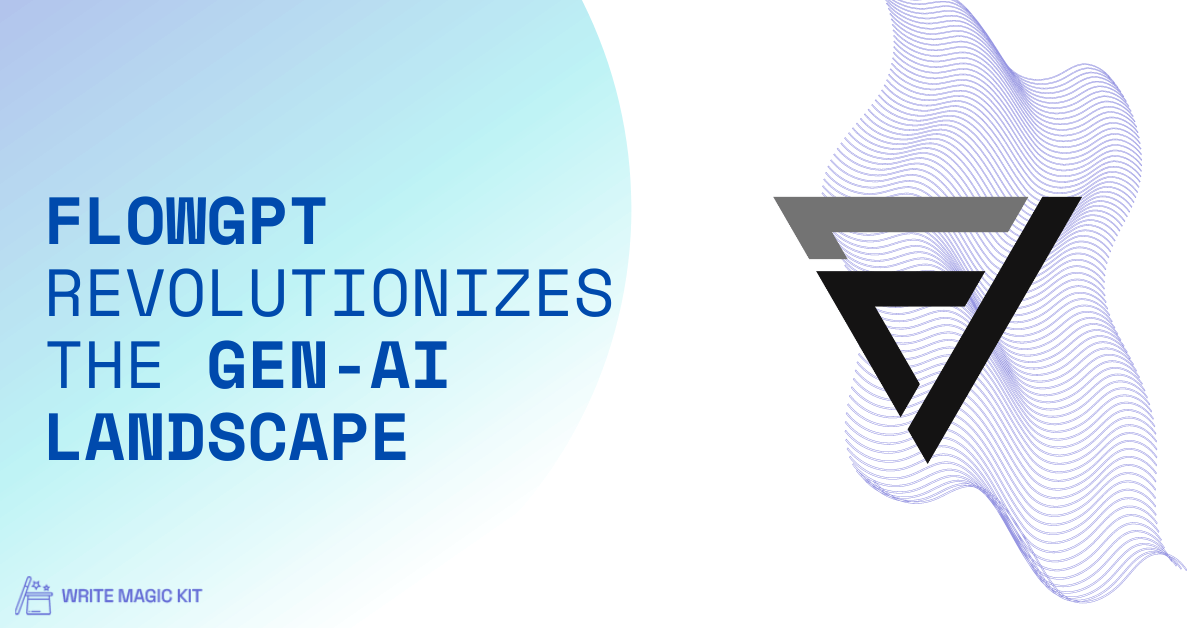In a bold move shaking the foundations of AI development, FlowGPT emerges as a disruptive force challenging the dominance of established players in the field. Founded by Jay Dang, a maverick UC Berkeley dropout, and Lifan Wang, an ex-Amazon engineering manager, FlowGPT promises to democratize AI creation through its innovative platform.
The Genesis of FlowGPT: A Visionary Endeavor
Dang and Wang’s brainchild, FlowGPT, is not just another AI marketplace—it’s a paradigm shift. Unlike the confined ecosystem of OpenAI’s GPT Store, FlowGPT opens the floodgates to a diverse array of generative AI models, including Google’s Gemini and Meta’s Llama 2. By embracing a multitude of models and providing intuitive creator tools, FlowGPT empowers users to unleash their creativity and share their GenAI-powered creations with the world.
Breaking Barriers: Accessibility and Innovation
FlowGPT’s mission is clear: to lower the barriers to AI adoption. With each iteration, the platform strives to make AI more accessible, bridging the gap between users and the cutting-edge technology that drives FlowGPT’s ecosystem. Through a user-friendly interface and curated app collections, FlowGPT ensures that everyone, from novices to experts, can tap into the potential of generative AI.
Navigating the FlowGPT Universe: A Seamless Experience
Users engage with GenAI apps on FlowGPT through an intuitive chat interface reminiscent of ChatGPT. Whether it’s coding assistance, creative storytelling, or academic support, FlowGPT offers a diverse range of applications tailored to every need. With features like app recommendations and customizable behaviors, FlowGPT provides a seamless experience where imagination knows no bounds.
The Heart of FlowGPT: Prompting Possibilities
At the core of FlowGPT’s ecosystem lies the power of prompts. These simple instructions serve as catalysts, guiding AI models to respond in unique and compelling ways. From horror narratives to headline optimization, FlowGPT’s prompts unlock limitless potential, fueling creativity and innovation in the GenAI community.
Challenges on the Frontier: Navigating Ethical Dilemmas
Yet, FlowGPT is not without its controversies. Some of its most popular apps push the boundaries of ethical AI, circumventing safety measures and potentially causing harm. From unauthorized therapy sessions to questionable health advice, FlowGPT’s Wild West mentality raises concerns about public safety and accountability.
Read More: Mistral AI Unveils Groundbreaking AI Model to Challenge GPT-4
Ethics in AI: A Balancing Act
While FlowGPT emphasizes ethical guidelines and risk mitigation, its laissez-faire approach to moderation leaves much to be desired. Despite assurances from its founders, FlowGPT’s marketplace remains rife with questionable content, challenging the notion of responsible AI development in an increasingly interconnected world.
Investor Confidence: Fueling the AI Revolution
Despite the controversies, investors remain bullish on FlowGPT’s potential. Goodwater’s recent $10 million investment underscores confidence in FlowGPT’s vision of an open, creator-focused AI ecosystem. With plans for mobile expansion and revenue-sharing models on the horizon, FlowGPT is poised to reshape the GenAI landscape.
The Road Ahead: Challenges and Opportunities
As FlowGPT charts its course into uncharted territory, it faces both skepticism and acclaim. The platform’s commitment to innovation is undeniable, but its ability to navigate ethical complexities will ultimately determine its fate. With millions of users and a growing community, FlowGPT stands at the forefront of a new era in AI—a future where creativity and collaboration reign supreme.
Read More: Darwin AI Unleashes Game-Changing AI Sales Assistant for Latin American SMEs

